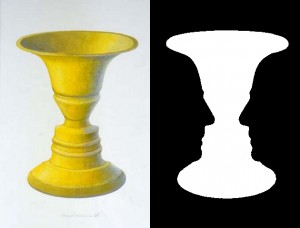Antagonyms, Social Circles and Chattering about VRM is  a deep and helpful piece by Cliff Gerrish on his Echovar blog. He starts by visiting antagonyms and contranyms (words that carry dual and opposing meanings) and how context tilts perception and meaning toward one side or another. By example he suggests that Google’s problems with Buzz were (at least in part) a result of internal perspective and experience (“Google launched Buzz as a consumer product, but tested it as an enterprise product”). From there he suggests that CRM and VRM also require that we consider perspective and reciprocity:
a deep and helpful piece by Cliff Gerrish on his Echovar blog. He starts by visiting antagonyms and contranyms (words that carry dual and opposing meanings) and how context tilts perception and meaning toward one side or another. By example he suggests that Google’s problems with Buzz were (at least in part) a result of internal perspective and experience (“Google launched Buzz as a consumer product, but tested it as an enterprise product”). From there he suggests that CRM and VRM also require that we consider perspective and reciprocity:
Meanwhile, SalesForce.com introduces Chatter to the enterprise and rolls it out at no extra charge to all employees on the internal network. And while it will start inside the enterprise, Chatter will quickly expand to the boundaries and begin to cross over. From a business perspective, it’ll be used to turbo-charge collaboration and create real-time communication for project teams and business units. But very quickly you’ll see friends sending messages to each other about meeting up for lunch, and a public-personal communications channel will be opened within the enterprise. And the circles will connect and widen from there.
Here are a couple more Contranyms:
clip (attach to) – clip (cut off from)
cleave (to cut apart) – cleave (to seal together)
Salesforce.com calls itself the leader in Customer Relationship Management and Cloud Computing. Chatter may just be the communication medium that ultimately contains both CRM and its opposite number, VRM. Vendor Relationship Management is a reaction to the data toolsets belonging to the enterprise and not to the individual customer.
In a narrow sense, VRM is the reciprocal — the customer side — of CRM (or Customer Relationship Management). VRM tools provide customers with the means to bear their side of the relationship burden. They relieve CRM of the perceived need to “capture,” “acquire,” “lock in,” “manage,” and otherwise employ the language and thinking of slave-owners when dealing with customers. With VRM operating on the customer’s side, CRM systems will no longer be alone in trying to improve the ways companies relate to customers. Customers will be also be involved, as fully empowered participants, rather than as captive followers.
If you were to think about what kind of infrastructure you’d want to run VRM on, Salesforce.com would be ideal. To run the mirror image of CRM, you need the same set of services and scale. The individual Chatter account could be the doorway to a set of VRM services. I can already see developers using the Force.com platform to populate a VRM app store.
Some corporations will attempt to maximize the business value of each individual worker, stripping out all the extraneous human factors. Chinese walls will be erected to keep the outside from the inside, the personal from the business, and the public from the private. But when you put messaging and communications tools into the hands of people they will find ways to talk to each other— about work, life, play, the project, and the joke they just heard at the water cooler.
I’ll need to study Salesforce’s services before I venture opinions about how well they apply on the VRM side. But in the meantime I do think there is an especially appropriate optical illusion for illustrating CRM/VRM reciprocity: the Rubin Vase:
As Wikipedia currently puts it,
Rubin’s vase (sometimes known as the Rubin face or the Figure-ground vase) is a famous set of cognitive optical illusions developed around 1915 by the Danish psychologist Edgar Rubin. They were first introduced at large in Rubin’s two-volume work, the Danish-language Synsoplevede Figurer (“Visual Figures”), which was very well-received; Rubin included a number of examples, like a Maltese cross figure in black and white, but the one that became the most famous was his vase example, perhaps because the Maltese cross one could also be easily interpreted as a black and white beachball.
One can then state as a fundamental principle: When two fields have a common border, and one is seen as figure and the other as ground, the immediate perceptual experience is characterized by a shaping effect which emerges from the common border of the fields and which operates only on one field or operates more strongly on one than on the other.
Says Rubin (in Synsoplevede Figurer, 1915),
One can then state as a fundamental principle: When two fields have a common border, and one is seen as figure and the other as ground, the immediate perceptual experience is characterized by a shaping effect which emerges from the common border of the fields and which operates only on one field or operates more strongly on one than on the other.
Over the next century Rubin’s vase illusion has more commonly been illustrated with a wine glass between two faces (perhaps because we’re drinking more and arranging flowers less):
I think this imagery does a better job of illustrating the figure-ground distinctions of CRM and VRM. I suggest that CRM sees the wine glass (from which they might drink from the wealth of well-managed relationships with customers), while VRM sees two faces that represent one-to-one interactions between equals.
After CRM and VRM come to be working well together, vendors and customers will still have their own tilted perspectives — one’s figure will be the other’s ground — but both will be fully present.
As of today that’s not the case. CRM is a multi-$billion industry, while VRM is just getting started. Perhaps, by thinking about CRM from a VRM perspective (and vice versa), we can build out tools and solutions better, and faster.




Hey, Doc.
I’m working, right now, on the Next Big Ticketing System (cause none of the available ones do what I want — which, on reflection, looks a lot like Facebook 🙂 — and this was a propitiously timed piece. I’ll try to hold the thoughts in mind as I design.
Great post — I think until each party views the other as both customer and vendor the dichotomy of perspectives will continue to fester.
Thanks, Baylink. Can you tell us what the Next Big Ticketing System is? The kinds of tickets that come to mind first for me are trouble and traffic. I suspect what you’re doing is something else.
Jonathan, I’m not sure what you mean by “both customer and vendor,” unless it’s that both are in positions of both supply and demand. For example, I’m always in the customer position at Trader Joe’s (a grocery store that doesn’t do coupons or loyalty cards, which alone is terrific). I supply nothing but cash. But I would like to supply more, and in ways that are not exclusive to Trader Joe’s (which would be the case with a typical CRM system). Say, for example, I would like to let them — and perhaps other stores, at my discretion — know that I would buy pork breakfast sausage (such as Jimmy Dean) if they stocked it. Right now the only way I can do that is to speak to a manager or some other human being in the store and hope for the best. That’s a grace of the store, but not a system. I would like more system than that: one that’s digital. I would also like to let the store know, again digitally, that I’m a good customer, and here’s how — but in a way that makes clear that I also require agreement from their side about how they can use my data. For example, they should be able to use it to improve their business, but not to spam me with promotional messages or to give or sell that data to other parties.
That would be a VRM system. Again, it would not be exclusive to Trader Joe’s. It would be my way of relating to multiple vendors (including grocers). And it would not be an exclusive non-substitutable service, such as eBay’s or Amazon’s — or even Craiglist’s. It would be based on open code and protocols, on which countless companies could build customer-driven products and services. It would improve what Trader Joes, eBay, Amazon and every other retailer does.
And until we get that, you’re right: things will continue to fester.
Hi Doc,
We built a CRM tool (PHP Postgres) for our WISP business. We were using GNU cash for accounting. TRAC provided a wiki/tickets system. Not ideal but worked good. There were also a bunch of other packages tied together by our custom “glue”. We sold the ISP network and continued with our consulting business a couple of years ago. At that time we decided we wanted to use an integrated prepackaged open software project for CRM/ERP. We spent six months researching and testing. The problem is that until you use the software in your working enviornment you really don’t know it will go. Opentaps was the last on we used and it almost killed our business. The biggest problem is complexity and poor interface design. The free software space really needs a good simple integrated business tool. The open VRM idea is great (really great!) but only if it’s part of a working CRM/ERP tool that You or I could sit down with and understand in a couple of days.
It’s straight out of cluetrain. It’s all about the people. If I can’t run the software easily as a sysadmin type person, the people that I hire as users have a steep learning curve/investment and a high frustration level.
At this point we are back to our home grown and GNUcash solution. While it doesn’t have as many features as we want, it gets the job done the most efficiently.
Dual-purpose tools, multi-purpose tools abound in nature, including human biology. But I wonder if there can be an organ that serves contrary purposes. e.g Breathing in and out are circular not contrary. So is the role of the heart in blood circulation.